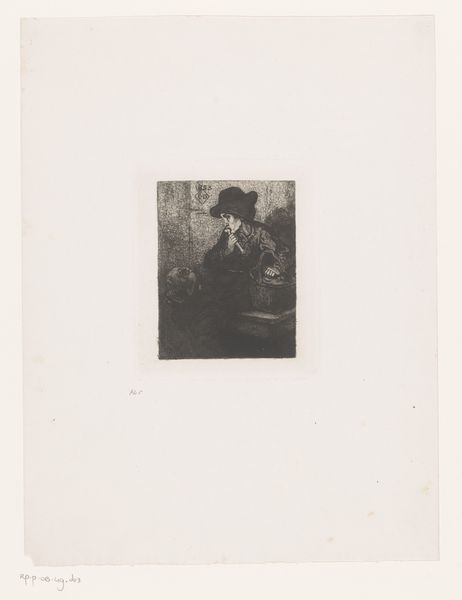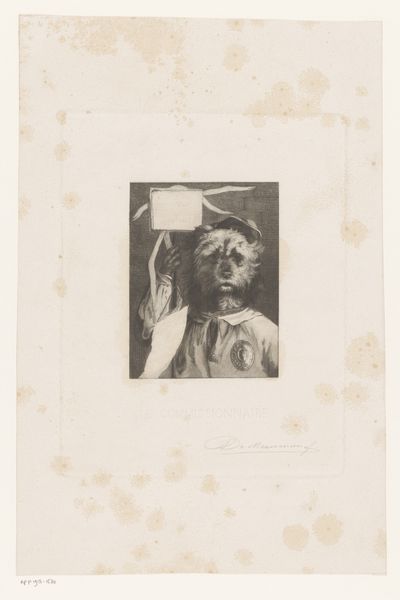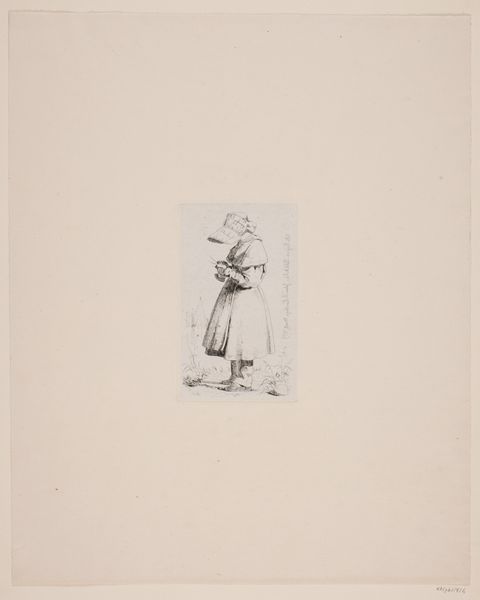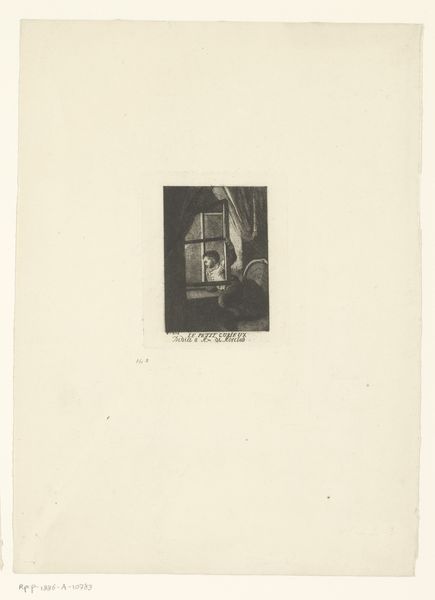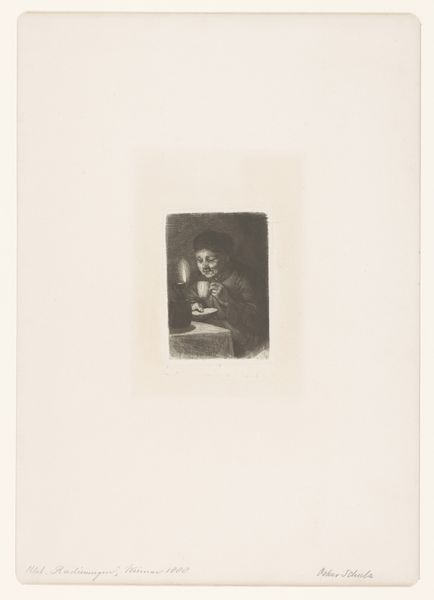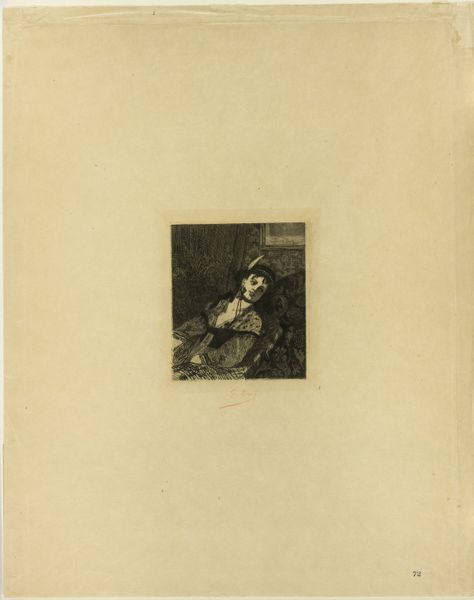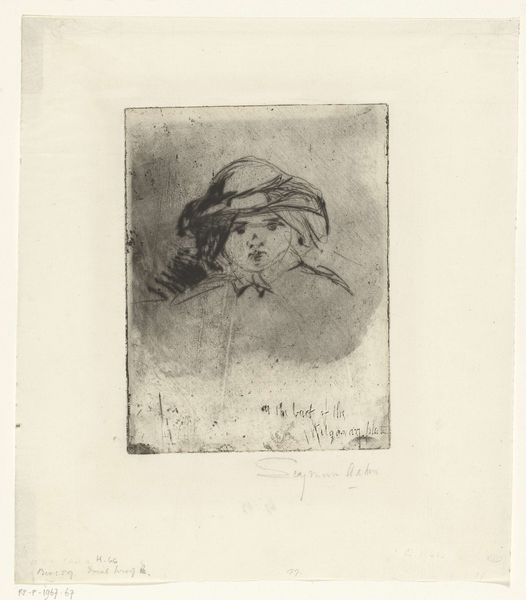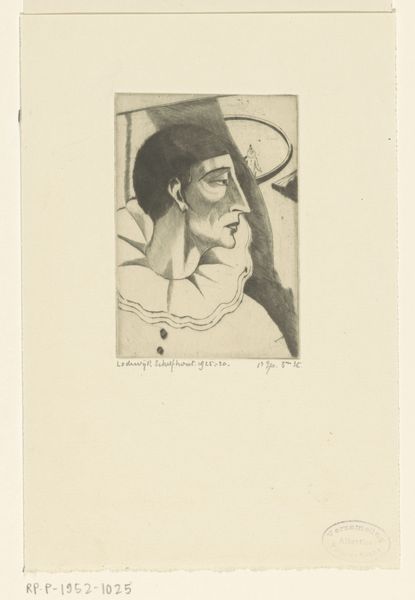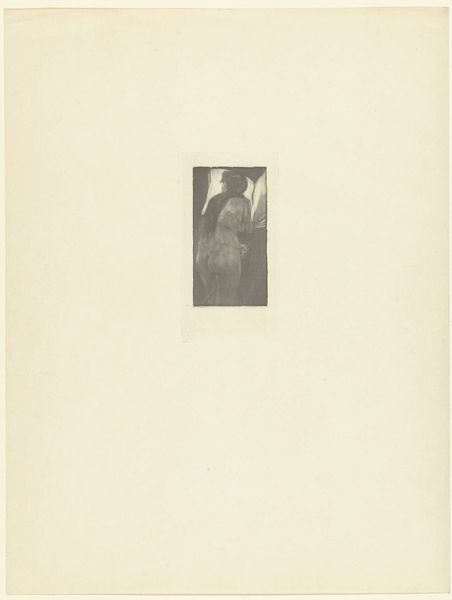
print, etching
#
portrait
# print
#
etching
#
realism
Dimensions: height 80 mm, width 68 mm
Copyright: Rijks Museum: Open Domain
Editor: This is Piet Verhaert's "Head of a Man with a Hat," an etching from 1879. It’s such a small, unassuming piece, almost hidden on the page. What strikes me is how ordinary the subject seems; it’s a realistic portrayal. How do you interpret this work in terms of its historical and cultural context? Curator: It's easy to overlook, isn't it? This etching, like many realistic portraits of the time, reflects a broader interest in representing everyday life. Consider the rise of photography around this period. How might the democratization of portraiture, with cheaper and faster photographic methods, influence artistic choices of etchers and painters? They turn from idealized representations to subjects that mirror a wider society. Editor: So, instead of painting wealthy patrons, artists started representing everyday citizens? Curator: Precisely! Also, think about the medium: etching, a more accessible printmaking process. This artwork questions who has the power to commission and own art, moving it into public spheres. It challenged established art markets where galleries promoted and celebrated works for an elite patronage. Does the size and distribution of such a piece further cement its revolutionary roots? Editor: Absolutely. Making art more accessible seems to reflect a broader shift in society. I had initially just viewed the art as a face in a hat; now it prompts questions about societal change. Curator: Exactly! Seeing art's connection to broader cultural shifts is key. This is how art pieces build meaning as markers in time, influencing our interpretation and reception.
Comments
No comments
Be the first to comment and join the conversation on the ultimate creative platform.
